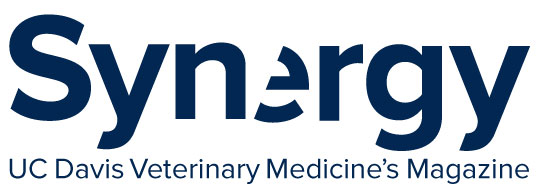
Building a Diverse Pipeline

It's no secret that the veterinary field lacks diversity. According to 2022 data from the bureau of labor statistics, approximately 91.4% of DVMs nationwide are White, 4.3% are Asian, 2.2% are Black and 0.5% are Hispanic/Latinx.
Increasing diversity, equity, inclusion, and belonging (DEIB) in this career path starts with attracting a diverse pool of applicants to veterinary school. Nationally, more than 70% of the total DVM student population is white. All other ethnic and racial backgrounds are considered underrepresented in veterinary medicine (URVM). This makes UC Davis one of the most racially and ethnically diverse DVM programs in the nation, with almost 50% URVM representation.
But, there’s still a long way to go if we are to achieve our goal to attract, recruit, and foster diversity and inclusion in student, faculty and staff populations reflective of California demographics.


We sat down with Monae Roberts, the school’s Chief Diversity Officer to ask about the challenges and successes of attracting more diverse DVM applicants.
What have been some of the biggest barriers historically in encouraging students from diverse backgrounds to apply to veterinary school?
We recently addressed one of the major hurdles when UC Davis dropped the Graduate Record Exam (GRE) requirement for application. We joined the majority of accredited U.S. veterinary schools in making the shift after studies showed systemic bias in the GRE. It has been argued that the test (based on verbal, quantitative and analytical writing) does not predict student success in the sciences, as the exam does not demonstrate an applicant’s understanding of science. The removal of the GRE has already shown to increase the applications by 67% from the previous year. Additionally, we moved our interviews from in person to online, which reduces the financial burden of travel, taking time off from work or school, etc.
Overall, we have seen an increase in racial/ ethnic diversity in admitted students over the past four years (multiethnic, Asian, Latinx). There are some racial/ethnic groups that have remained stagnant (Native Hawaiian, Native American, Black) over the past four years so this remains a priority.
What are key initiatives that Davis has undertaken/launched in the past several years to increase engagement with undergrads from diverse backgrounds?
While plans have been made to better engage underrepresented students, the COVID-19 pandemic has made it challenging to implement changes.
Fortunately, Dean Mark Stetter has made it a priority by including DEI as one of the pillars in the school’s strategic priorities. There has been a large increase in information sessions delivered to universities that have been previously less accessible. There are plans in the works to attract undergrads from Hispanic Serving Institutions and Historically Black Colleges and Universities into our summer programs. There are also plans to attend STEM conferences focused on diverse communities to attract a more diverse applicant pool.
How early does this engagement really need to start?
Statistics show that students should be introduced to career paths as early as eight or nine years old.
Creating a diverse, equitable, and inclusive veterinary community demands sustained effort, continuous improvement, and accountability.
How does the recent Supreme Court decision regarding the use of race in college admissions affect our admissions policies?
The Supreme Court decision regarding race in college admissions will not ultimately affect our admissions policies because of proposition 209, which is already in place and essentially mimics the court decision for the state of California.

What are the current challenges and what are the plans to address them?
We still hear from kids in underrepresented communities that they lack awareness of veterinary medicine as a potential career path.
So, we are trying to reach them early through programs such as League of VetaHumanz, VetMed Youth Camps, VetMed Exploration Academy, and Vets of the Future/Future Day.
The financial burden of veterinary school remains a challenge. Thanks to strong donor support at UC Davis, we’re able to offer approximately $4.5M in scholarships annually. We’re working to increase that amount and expand the scholarships we’re able to award students over time.
Another challenge is lack of access to veterinarians. We’re expanding our Summer Enrichment Program, which provides opportunities for undergraduate students to gain necessary experience with veterinarians, as well as mentorship with clinicians and current DVM students.
Are there more ‘hidden’ forms of diversity in terms of sexual orientation or other identities that we need to be more conscious and supportive of?
Yes, there are definitely hidden forms of diversity and we are conscious and intentional in being inclusive regarding these aspects of diversity in addition to race/ethnicity. We have made changes to our data collection processes to allow students to indicate pronouns, and update their lived-name and gender marker. We are also becoming more intentional with supporting our students who may require a space for reflection purposes, including anyone who may be a part of any spiritual community.
Creating a diverse, equitable, and inclusive veterinary community demands sustained effort, continuous improvement, and accountability. Our community is committed to lasting change, but it will take all of us to make a difference.
